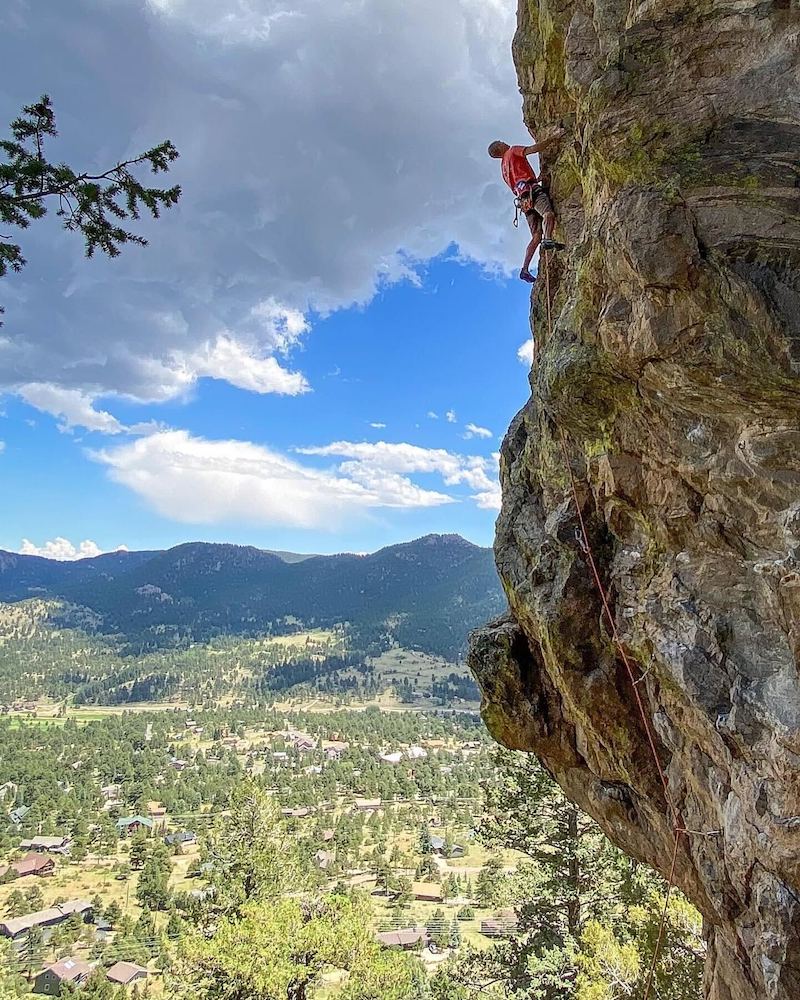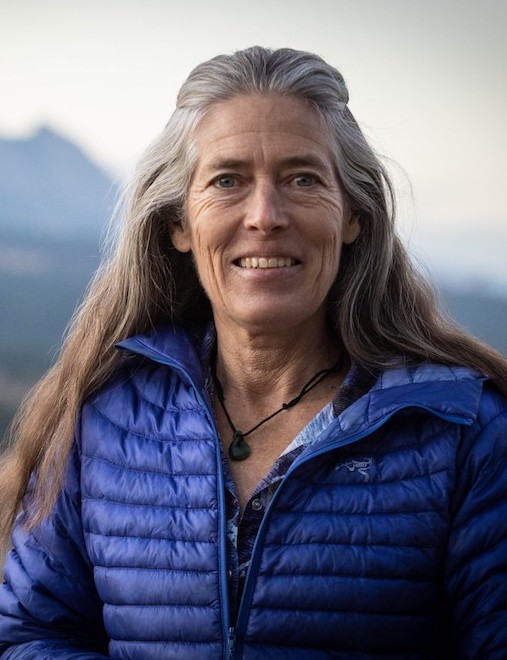Conserving Crags
16 May 2023
How the Access Fund is creating a community that ensures the future of climbing
By DELL BLEEKMAN
On a quiet moonlit night in 1949, two CU Boulder freshmen climbed the Third Flatiron and, armed with white house paint and brushes, created a 50-foot tall “C” on the face (the “U” would come six years later).
But times change, ethics evolve. Today, climbers realize the impact they have on the environment; they’re keenly aware that access on public and private land can be revoked. And when land closures loom, Access Fund—a Boulder-based nonprofit organization that protects and conserves America’s cherished climbing destinations—steps in and steps up.
The American Alpine Club (AAC), formed in 1902, was at the time the main organization designed to unite a community of climbers. A few AAC members started to see a liability crisis in the 1980s, where product and property policies were skyrocketing or being canceled. Many land owners responded by closing access to climbers. A few climbers paying attention to this alarming trend also had law degrees and were in a position to do something about it. Rick Accomazzo was a California climber who had relocated to Boulder to start his law practice. An original member of a loose-knit confederation of highly accomplished climbers in California called the Stonemasters, he now found himself interested in land issues and in the mid-1980s joined the AAC’s access committee.
“The driving force was a climber and public interest lawyer named Armando Menical,” Accomazzo recalls. Menical headed up the access committee. “It was a great group of passionate people who wanted to stop the closures,” he says. So, the group opened a dialog with various land managers, letting them know that recreational use statutes protected land owners when the land is opened for public recreation. “Oftentimes that conversation was enough to reopen a climbing area,” Accomazzo states.
Soon enough, this access committee within the AAC attracted attention, donations and benefactors, and in 1991 it broke away from the AAC and the Access Fund was born. And not a moment too soon—around that time American rock climbing was at a crossroads, and in a crisis. Two climbing camps were at war, each with differing philosophies toward the sport. The traditionalists, or “trad” climbers, favored a ground-up approach to climbing, while “sport” climbers, importing new techniques from Europe, were hanging on vertical rock, protected by bolts and practicing moves over and over until perfection was achieved. Chris Winter, Access Fund’s executive director since 2019, thinks Access Fund founders had incredible insight by avoiding this fight altogether. “There was an intentional focus to support all climbers and all forms of climbing,” Winter states. Rising above the fray was the first step to becoming a national organization.

Chris Winter climbing Thumb Open Space, just outside of Estes Park. Ancestral lands of Arapaho, Cheyenne, Núu-agha-tʉvʉ-pʉ̱.
Initial Successes
The Golden Cliffs is a popular crag at the North Table Mountain Park; climbers along the Front Range flock to this popular band of cliffs for hundreds of accessible routes. The Cliffs is also one of Access Fund’s earliest successes. Access Fund worked with private landowners, acquired the property and transferred it to Jefferson County, permanently protecting the land as open space for the community, not just climbers. Looking back, Rick Accomazzo sees this as the moment Access Fund decided it would purchase land to conserve climbing areas, but would transfer that parcel back to land managers. “Back then we decided we didn’t want to be long-term land managers,” he says. A better plan is to have local climbing organizations or cities own the property. A few forward-thinking Access Fund members realized the organization needed a revolving loan fund. “The idea is to have a pot of money on hand, so when a land parcel comes on the market, we don’t need to raise the money first,” Winter says. Access Fund loans the money, say to a local climbing organization, and it’s slowly paid back. “This has been a game-changer for the climbing community, giving climbers ownership and the sense that they can make a difference,” Winter states.
Working Together
Today, Access Fund works with a variety of land managers across the country. “We have 30 years of history working with the National Park Service,” Winter relates, “and federal land managers want that established, consistent partner.” It’s these agreements that allow climbing in meccas such as Yosemite, Zion and many others. Access Fund is also committed to the sustainability of climbing areas, by building trails and educating climbers on minimizing their impact.
Access Fund staff and volunteers partner with members of the Boulder Climbing Community to replace bolts in Boulder Canyon. Ancestral lands of Núu-agha-tʉvʉ-pʉ̱ and Tséstho’e.
Looking Forward
As new generations of climbers push the boundaries of the sport, Access Fund will be there. “We have an amazing opportunity to pass on a legacy of conservation and stewardship to the next generation,” Winter says. Certainly, there are issues—the impact climbers have on the environment and the competition for uses of public land. accessfund.org
Catching Up with Chris Winter
Executive Director, Access Fund

Chris Winter is the executive director of Access Fund, a position he started in January 2019. Originally from the Pacific Northwest, Winter began his career as a public-interest environmental attorney supporting conservation groups from the North Slope of Alaska to California. Winter grew up a skier and began climbing in his twenties. But like many who feel the pull of the outdoors, he struggled to find the balance of professional pursuits and time in the mountains. The Access Fund Executive Director opportunity—a position where he could help the climbing community while working at the intersection of outdoor recreation, public lands and conservation—was simply too good to pass up.
No one work day is the same, something Winter relishes. “One of the things I love about this job is that it’s so varied,” he explains. One week he might be in Washington, DC, speaking with congressional staff and stakeholders and the following week, out in the field doing site visits on former projects where Access Fund bought parcels of property, permanently conserving them.
What surprised him was the local level of involvement and activism. “I moved to Boulder for this job four years ago and had no idea I would meet so many people who supported the Access Fund,” Winter says. And the climbing opportunities? “From Eldorado Canyon, Boulder Canyon and the Flatirons; it’s world class,” Winter states, referring to both quality and volume in the region. “It’s an unbelievable gift we have inherited,” he continues, “a gift passed on from the folks who came before us.” Winter and his work at Access Fund ensure that climbers and all those who trek outdoors have a champion for the conservation of open space.
Catching Up with Lynn Hill

Simply put, Lynn Hill is a legend. Not just in the rock-climbing world, but in all of competitive sports. She’s an elite athlete with a list of accomplishments to match. So, it may surprise some to know that when Hill was on the front end of her career, she contemplated becoming a physical therapist. It makes sense; she loves the nature of motion and understanding how the body moves. That same innate understanding of movement would help her become the first person to free climb The Nose, El Capitan’s most iconic route, in 1993. Climbing The Nose, certainly one of the best-known long climbs in the world, required every technique in Hill’s book.
As a professional athlete, Hill also became an advocate and an educator. She joined forces with Access Fund back in the mid-1990s; the organization’s focus on conservation and stewardship struck a chord with her. “We can’t access these beautiful cliffs if they’re closed to recreation,” Hill explains. Today, she continues to give her time and effort to Access Fund causes, meeting with policy makers, advocating for open public lands, and acting as the face of Access Fund advertising campaigns.
Hill’s current passion is a long-time project that has just come to fruition, circling back to that delicate dance she executes on the rock. It’s a 70-minute video titled “Fundamentals of Climbing” and it focuses on climbing technique and efficiency. “I have a very visual way of seeing forces and movement,” Hill explains, “and in the video I explore movement over different types of rock, including slab, vertical face and others.” The goal is to help climbers recognize how to position themselves, anticipate where to put hands and feet, and better understand the mechanics of movement.
When it was time to settle down, Hill chose Boulder. The diversity of climbing was a huge draw, as was the university and the population it attracts. “I’m proud that Boulder has such smart people who want to do the right thing,” she says. She moved here in 2000, raised her son and hasn’t looked back. For Hill, it’s about open space, positive interactions, great climbing and the general beauty of the area. “The Flatirons are some of the most beautiful formations in the world,” she says. Many Boulderites, climbers and non-climbers alike, would definitely agree. lynnhillclimbing.com












